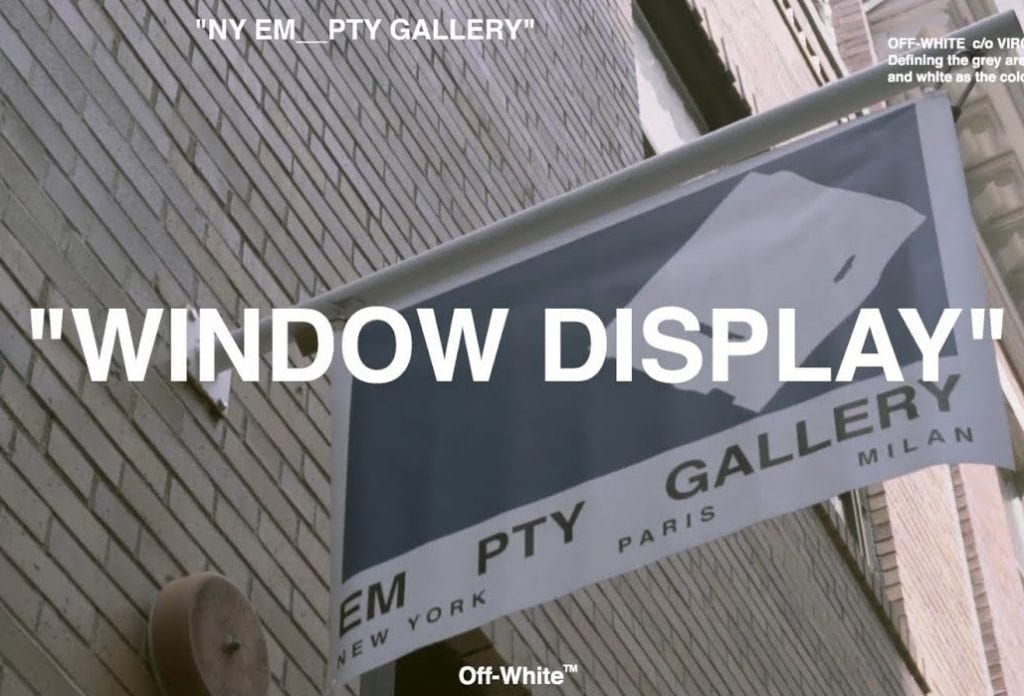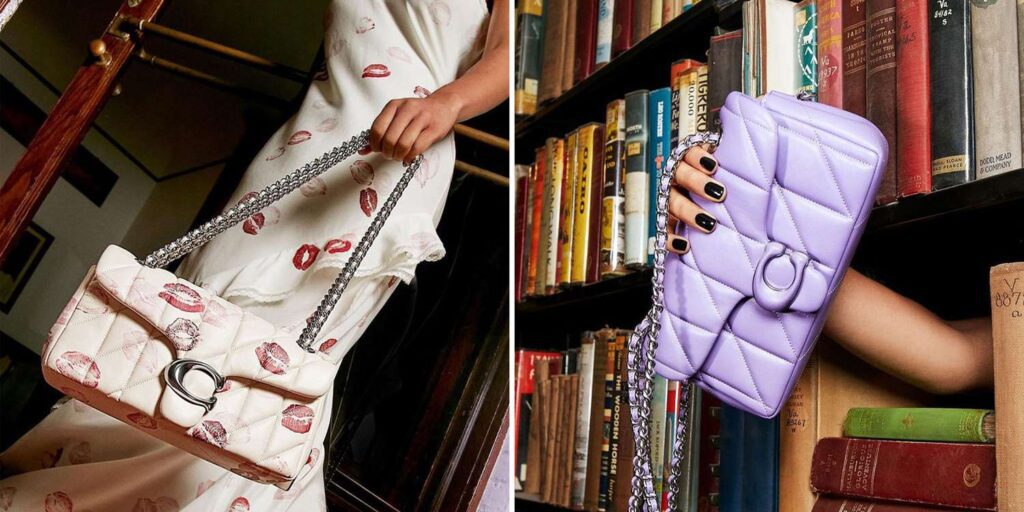Off-White may have beaten a lawsuit accusing it of hijacking the name of a multi-disciplinary design and creative agency that does business as OffWhite Co., and allegedly confusing consumers in the process, but Virgil Abloh’s brand is still in the midst of a squabble over a different trademark. This time, the wildly-famous fashion brand is facing off over the name of its gallery-slash-retail venture, EM PTY GALLERY, with a similarly-named company calling foul on the basis that it started using the name years before Virgil did.
In November 2018, counsel for Off-White filed a trademark application for registration for EM PTY GALLERY, a mark that the brand intends to use, according to the application, on various types of bag, including (but not limited to) handbags, tote bags, backpacks, and wallets. When Off-White’s application was published for opposition last year by the U.S. Patent and Trademark Office (“USPTO”), a routine practice that gives any party that believes it may be damaged by registration of the mark an opportunity to try to block it, that is exactly what one company did.
In the notice of opposition that it filed in October 2019, C1 Enterprise Limited (“C1”) takes on Off-White’s application for EM PTY GALLERY. Its basis for doing so? Its “wholly-owned subsidiary” Empty Gallery Limited’s use of “the service mark EMPTY GALLERY” and its own pending application for the mark (for use on things like posters, and music and gallery services), which it filed in November 2017, a year before Off-White.
“Essentially Identical”
Hong Kong-based C1 asserts that in 2015, Empty Gallery Limited began using THE EMPTY GALLERY trademark in connection with its gallery services, but a year later, dropped the “the” and adopted EMPTYGALLERY “both in connection with art gallery and related services, as well as [for] ancillary goods, namely t-shirts and tote bags.” It claims that such use of the mark “has continued to the present,” including by way of its practice of “publicizing its art gallery and related services in a number of cities around the world, including New York, Miami, San Francisco, Shanghai, Paris and Berlin.”
Speaking specifically to its uses of the mark in the U.S., C1 claims that in March 2018, it participated in the Armory Show, the art exhibition in New York City that routinely draws some 60,000 attendees. During the multi-day show, C1 says that it “distributed tote bags bearing its EMPTY GALLERY mark,” and thereafter, gave out the same bags at the 2018 Frieze New York art show, and “intends to continue distribution of such goods at other exhibitions, in the U.S. and elsewhere.”
Against that background, C1 asserts that in November 2018, Off-White filed its application for registration “on an intent-to-use basis” for EM PTY GALLERY for use on bags. (An intent-to-use application may be filed when a mark has not yet been used in commerce in connection with the goods/services listed on the application, but the filing party has a bona fide intention to use the mark in commerce in the not too distant future).
The issue, according to C1, is that its “in addition to preceding … the filing of the [Off-White application]” for the EM PTY GALLERY mark, which it says is “confusingly similar, if not essentially identical to [its own] EMPTY GALLERY mark,” C1’s distribution of its EMPTY GALLERY tote bags “precedes any use of [Off-White’s]mark on the [brand’s] goods.” (It presumably also precedes Off-White use of the same mark on apparel, including “tops, bottoms, [and] jackets,” as well as “belts, boots, and sneakers,” for which Off-White filed an application in August 2018, and was subsequently awarded a trademark registration. C1 does not appear to be taking issue with that registration, which claims that Off-White’s first use of that mark in connection with apparel dates back to August 2017).
With the parties’ similar marks and potentially overlapping goods/services in mind, C1 asserts that if Off-White’s mark were to be registered in connection with various types of bags, it “will clothe [Off-White] with the false suggestion and appearance that it has exclusive rights to the mark EM PTY GALLERY/EMPTY GALLERY and variants in connection with Class 18 goods,” thereby, causing “harm and damage to C1.” Specifically, the company claims that the registration of Off-White’s mark “will cause confusion in the market, permitting the public to wrongfully believe that there is a relationship between [Off-White] and [C1], or that [Off-White’s] Class 18 goods sold under [C1’s] mark are the products of, or are otherwise licensed or authorized by [C1] when they are not.”
As for the status of the opposition proceedings, they have been suspended almost from the outset with the parties citing settlement negotiations. In the meantime, the EM PTY GALLERY application joins dozens of other pending applications that have been filed by Off-White’s counsel, ranging from various arrow-centric logos and stylized versions of the word “Off” to its relatively famous red zip tie and the interesting (albeit potentially controversial) “Product Bag” mark, quotation marks included.
Brand(ing) Building
Taken together and considering the types of products that Off-White tends to offer up (i.e., garments, footwear, accessories, etc. that are rarely – if ever – without prominent trademark placement), the quest to amass no shortage of trademark registrations generally makes sense for more reasons than one. Primarily, though, in much the same way as most established brands are in the business of enticing consumer purchases by way of their heavily-protected trademarks, whether it be double “C” logos and monogram prints, or Swoosh graphics and three striped footwear, and more importantly, what those trademarks mean to and convey to consumers, which is often the result of decades of use and tens (if not hundreds) of millions of dollars in carefully-crafted marketing, Off-White is, too.
The brand’s original diagonal stripes motif, followed by its zed zip tie and near-constant “ironic” use of quotation marks, for instance, and the goodwill that come with those graphics in the minds of the brand’s fans, are precisely the things that it is selling, with the garment and accessories and their design firmly secondary to that. (It is also selling its association with Abloh, of course, as part of that goodwill).
As such, it seems (to me) that Off-White’s overarching strategy at this point – particularly from a value creation perspective – is to not only come up with as many of those marks as it can, put them in front of its fanbase (and the media in the process) by consistently slapping them on clothing and accessories, and get that group of consumers to associate the marks with the Off-White brand, thereby, creating trademark rights and selling a whole lot of pricey t-shirts. Based on its rather-regular filings with the USPTO, the company’s model also involves devoting no shortage of resources to building an arsenal of registrations in a relatively aggressive manner, likely both for enforcement purposes and value-creation given that intellectual property is among a brand’s core assets.
It will be interesting to see how this experiment continues to play out.











